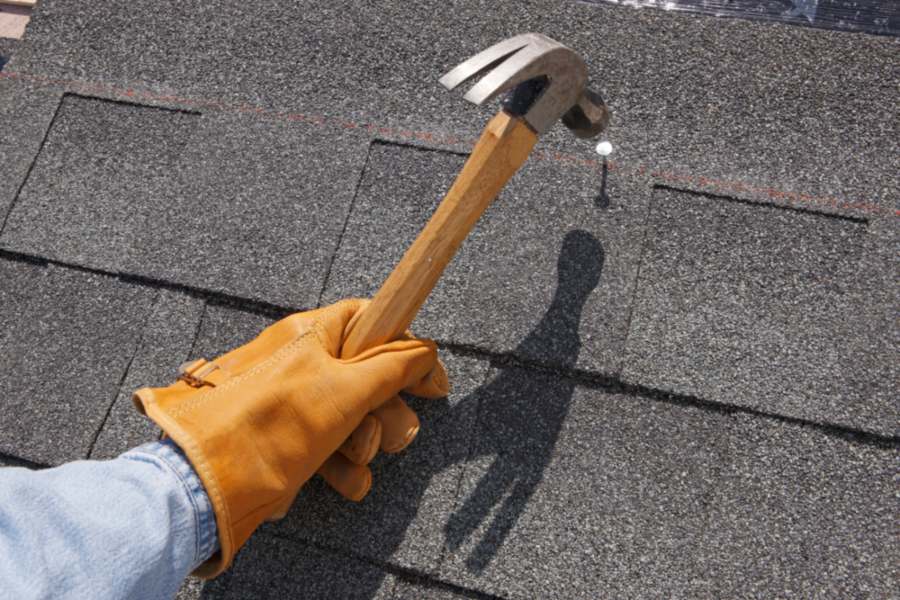What Size Roofing Nails Should Be Used For Shingles?
Choosing the Right Roofing Nails for Shingles
Not sure which type of nails are right for your roof? CedarTech Roofing is here to lay out the different options of roofing nails available for shingles. Choosing the right nail size for your shingle roof might seem like a small detail, but it’s one of those decisions that can make or break your roofing project—literally. The wrong nail size can lead to loose shingles, water damage, and costly repairs. Whether you’re a DIY homeowner tackling your first roofing project or a contractor looking to brush up on best practices, understanding roofing nail sizes is essential for a secure, long-lasting roof. The good news? Once you know the basics, selecting the right roofing nails for shingles becomes straightforward. As you read below, we will walk you through everything you need about nail sizes, from the types available to the specific factors that should influence your choice.

Types of Nails Used for Shingle Roofs
Before diving into sizes, it’s essential to understand the different types of nails commonly used for shingle installation. Each type serves a specific purpose and works best with certain roofing materials. Consider the following factors:
- Roofing nails: These are the most common choice for asphalt shingles. They feature a large, flat head that provides excellent holding power and helps prevent the nail from pulling through the shingle material. They’re typically made from galvanized steel to resist rust and corrosion.
- Ring shank nails: These offer superior holding power thanks to their textured shaft. The rings along the nail create additional friction, making them harder to pull out. These are particularly useful in areas with high winds or when working with thicker shingle materials.
- Coil roofing nails: They are designed for use with pneumatic nail guns. They come connected in a coil, which allows for faster installation and is preferred by many professional roofers for efficiency reasons.
- Aluminum nails: These are lightweight and naturally corrosion-resistant, making them a good choice for coastal areas where salt air can cause steel nails to deteriorate more quickly.
Recommended Nail Sizes for Different Shingles
The standard roofing nail size varies depending on your shingle type and installation method. Here’s what you need to know:
- Asphalt shingles: Typically require 1¼-inch roofing nails for new installations over ½-inch plywood or OSB decking. This length ensures the nail penetrates at least ¾ inch into the roof deck, which meets most building code requirements.
- Architectural shingles: These are thicker than standard three-tab shingles, so they often need slightly longer nails. A 1½-inch nail is usually recommended to ensure proper penetration through both the shingle and into the decking.
- Re-roofing projects: These involve installing new shingles over existing ones, which require longer nails to account for the additional thickness. In these cases, 1¾-inch to 2-inch nails are typically necessary.
- Cedar shingles and shakes: These require entirely different considerations. These materials are usually installed with 1¾-inch to 2-inch nails, depending on the thickness of the cedar and the type of underlayment used.
Factors to Consider When Choosing Nail Size
Several important factors should influence your decision when selecting the right nail length for roof shingles:
- Roof deck thickness is the primary consideration. Most residential roofs use ½-inch or ⅝-inch plywood or OSB decking. Your nail must penetrate at least ¾ inch into this decking material for a secure hold.
- Climate conditions in your area matter significantly. High-wind zones may require longer nails or ring shank nails for additional holding power. Similarly, areas with frequent temperature fluctuations benefit from nails that can handle expansion and contraction.
- Local building codes should always be your starting point. Many municipalities have specific requirements for roofing nail sizes, and failing to meet these standards can result in failed inspections or insurance issues.
- Shingle weight and type directly impact nail selection. Heavier architectural shingles put more stress on fasteners than lightweight three-tab shingles, requiring more robust fastening solutions.
- Installation method also plays a role. Hand-nailing allows for more precise nail placement and depth control, while pneumatic nail guns require specific nail types and may need different length considerations for driving force.
How Do Nail Sizes Impact Shingles?
Getting the nail size wrong can seriously affect your roof’s performance and longevity. Nails that are too short may not provide adequate holding power, leading to shingles that can lift or blow off during storms. This creates immediate water infiltration risks and can result in extensive interior damage. Conversely, nails that are too long can penetrate entirely through the roof deck and potentially damage electrical wiring, plumbing, or create unnecessary holes in your roof structure. Over-driving nails can also damage the shingle material, creating weak points where tears can develop. The diameter of your roofing nails matters too. Standard roofing nails are typically 11 or 12 gauge, providing the right balance of holding power and ease of installation. Thinner nails may not hold adequately, while thicker nails can split shingle materials.
Making the Right Choice for Your Roof
Selecting the proper roofing nails for shingles doesn’t have to be complicated, but it does require attention to detail. When in doubt, consult with local building officials or roofing professionals who understand your area’s requirements and challenges. At CedarTech Roofing, we’ve seen firsthand how the right fastener choice can significantly extend a roof’s lifespan. Remember that quality nails are a small investment compared to the cost of premature roof failure. Take the time to choose the right size and type for your application, and your roof will thank you for years. If you’re looking for reliable service, please contact us today.
